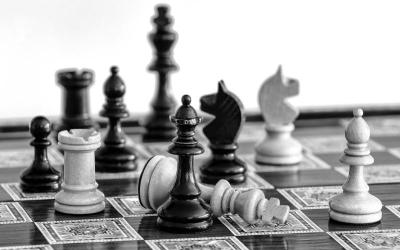The term Déjà vu, which comes from French and means "already seen," describes a peculiar sensation we experience when we find ourselves in a situation or place and feel as if we have already lived through it before. This phenomenon creates a strange sense of familiarity, as though we are reliving a moment that happened in the past, even though we know it’s the first time we are experiencing it.
Why Does Déjà Vu Happen?
Déjà vu has been a subject of study for many years, and although it is not fully understood, there are several theories attempting to explain it. Some of the most popular ones include:
- Past Lives: A more spiritual or mystical theory suggests that Déjà vu is a sign that we have experienced similar situations in past lives. According to this view, what feels familiar to us might have happened in another time or place, in a previous existence.
- Coincidence: From a more logical perspective, some believe that Déjà vu is simply an extraordinary coincidence, where two or more moments in our lives align in a way that seems too unlikely to be random. It is a combination of situations, people, and environments that resemble something we’ve already experienced, and the mind interprets this as a "memory."
- Dreams and Memory: Another popular theory is that Déjà vu might originate from a dream. Sometimes, we dream of situations that later seem strangely familiar in real life. It is possible that during the dream, our mind recorded details that we don’t consciously remember, but when they are activated in reality, we feel as if we have already lived through the situation.
Why Do Only Some People Experience It?
Déjà vu doesn’t affect everyone equally. Some people experience it more frequently, while others never feel it. Factors such as stress, fatigue, brain activity, and age can influence the intensity and frequency of this phenomenon. It is also suggested that younger people, especially teenagers, are more likely to experience Déjà vu, although it can occur at any point in life.
Duration and Nature of Déjà Vu
One of the most characteristic aspects of Déjà vu is its fleeting nature. This phenomenon typically lasts between 2 to 5 seconds at most. Although the sensation may seem to last longer in the moment, Déjà vu usually fades quickly, often with the movement of a person or object, or when the environment changes. Once the sensation disappears, it is hard to remember it clearly, leaving the person with a sense of confusion.
Conclusion
Déjà vu is a fascinating phenomenon that reminds us of the complexity of our perception and the way our minds process information. While there is still no definitive answer about its cause, it remains a mystery that sparks both curiosity and debate. Whether it is an echo from a past life, a mere coincidence, or the result of brain activity, Déjà vu continues to be a reminder of how little we understand about the workings of our mind.








